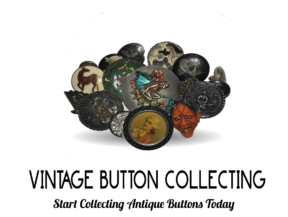
Antique Champleve Buttons: An Overview of the Champleve Tradition
Antique champleve buttons have an interesting history and there are many beautiful varieties that have interested collectors for decades. They possess a rare beauty because of the complex process used to make them. Rather than simply forming a button out of one source material and then coloring and painting it, antique champleve buttons are formed from two separate source materials in a very specific technique.
Antique champleve buttons can be identified by their unique structure. They typically consist of etched metal plates, usually gold, silver, brass, copper or bronze, which has been “cut out” so that two or more separate areas leave raised metal “walls” with a sunken hollow area. Enamel is then placed into these sunken hollow areas. The enamel is then fired and/or polished to create the finished button. The result is a beautiful and unique mix of colorful enamel accented with threads and borders of shiny metal. Antique champleve buttons, as well as other champleve décor items and apparel artifacts, employ one of the world’s oldest known enameling techniques. Champleve dates back as far as the 14th century, when the Celts and Romans used the technique to make jewelry and requilaries.
Antique champleve buttons, which use the champleve enameling technique, are more commonly found with brass or copper plates rather than silver, gold or bronze simply because of the cost to manufacture them. At the time when antique champleve buttons were being created, access to gold and silver was limited to only the wealthy, so jewelry makers more often selected the durable, but less expensive, copper and bronze plates. Antique champleve buttons can often be found with floral patterns or plain colored enamel.
The champleve enameling technique is not exclusive to antique champleve buttons. It can also be found antique spoons, particularly from the czarist era of Russia.
If you are looking into acquiring antique champleve buttons, make sure you are well versed in the differences between champleve and cloisonne. Although the two techniques produce similar results in their artifacts, cloisonne is typically worth more money because the techniques used to create is much more technically difficult. Cloisonne is where delicate metal wires are sautered onto a solid base to create the “threading” effect, separating the areas where the enamel is placed, rather than etched, as champleve is. Before you approach a potential buyer or appraiser with your antique champleve buttons, make sure that it is indeed champleve you’re dealing with and not cloisonne.
One final word about antique champleve buttons: they are delicate and because of the separate enamel and metal components, it is not recommended to try restoring them yourself unless you have appropriate experience and materials. It is best to first seek the advice of a professional restorer before proceeding.












